
PEEK INTO THE PAST
ATACAMA LARGE MILLIMETER/ SUBMILLIMETER ARRAY (ALMA)
Chajnantor plateau, Atacama Desert, Chile
The Atacama Desert in Chile is an astronomer’s paradise. Thanks to its high altitude, cold nights, scant precipitation and lack of pollution, it boasts some of the clearest night skies on the planet. That’s why the European Southern Observatory (ESO) – an astronomical research organisation of 16 countries – worked with Chile to set up powerful ground-based telescopes in the desert, including the Atacama Large Millimeter/submillimeter Array (ALMA). Beginning observations in 2011, the high-tech telescope consists of 66 precise antennas that can be arranged in different ways to give a variable zoom, capturing sharper detail than the Hubble Space Telescope. ALMA studies light with wavelengths of around a millimetre, originating from the universe’s coldest objects that exist at temperatures at just above absolute zero. These objects include the molecular gas and dust clouds that are the building blocks of galaxies, stars and planets. By studying these regions of the universe, scientists will be able to decipher the mysteries of planetary formations, as well as our cosmic origins.
The Five-hundred-meter Aperture Spherical Telescope (FAST) is the world’s largest single-dish radio telescope.
DECIPHER THE UNIVERSE
VERY LARGE TELESCOPE (VLT)
Cerro Paranal, Atacama Desert, Chile
Denne historien er fra November/December 2020-utgaven av Very Interesting.
Start din 7-dagers gratis prøveperiode på Magzter GOLD for å få tilgang til tusenvis av utvalgte premiumhistorier og 9000+ magasiner og aviser.
Allerede abonnent ? Logg på
Denne historien er fra November/December 2020-utgaven av Very Interesting.
Start din 7-dagers gratis prøveperiode på Magzter GOLD for å få tilgang til tusenvis av utvalgte premiumhistorier og 9000+ magasiner og aviser.
Allerede abonnent? Logg på

TAKE IT SLOW
Slow running is a fitness trend with some hard and fast science behind it
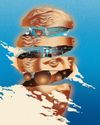
Physics, AI and music share a common thread. You just have to know where to look
Studying science can lead you in many directions and open doors to unexpected possibilities along the way
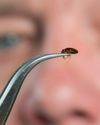
BED BUGS VS THE WORLD
When bloodthirsty bed bugs made headlines for infesting Paris Fashion Week in 2023, it shone a spotlight on a problem that's been making experts itch for decades: the arms race going on between bed bugs and humans
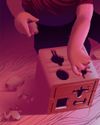
Kids are the key to understanding obesity. But we need more of their genes...
We can unravel the role that bodyweight plays in disease, but we need a bigger, more diverse, sample of genetic material to do so

COVID inquiry: What did we learn and what can we do better in future pandemics?
Masks, social distancing, lockdowns... how effective was the UK's response to the COVID-19 pandemic?
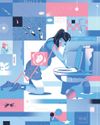
One hormone could be the key that unlocks a cure for morning sickness
The nausea and vomiting that, in extreme cases, can endanger mothers and babies might soon be just a memory

THE WORLD'S WEIRDEST CREATURES
Under the sea and upon the land, some animals look - to us - pretty strange...
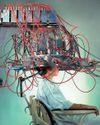
WHEN MIND AND MACHINE COLLIDE
First, Elon Musk wanted to make electric cars ubiquitous, then he wanted to make space exploration a private enterprise. Now, with Neuralink, his newest venture, Musk hopes to merge humans and artificial intelligence. Turns out, it might not be such a crazy idea...

COME OUT OF YOUR SHELL
Social anxiety is more than just being shy. It's a phobia born out of our evolutionary past. But that raises a puzzling question: why do so many of us fear human interaction when we're supposed to be the most sociable species on the planet?
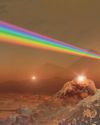
SPACE ODDITIES
Take a tour of the weirdest spots in the universe, where the 'normal' rules don't apply. Places that squeeze time, blow bubbles and even rain glass... sideways